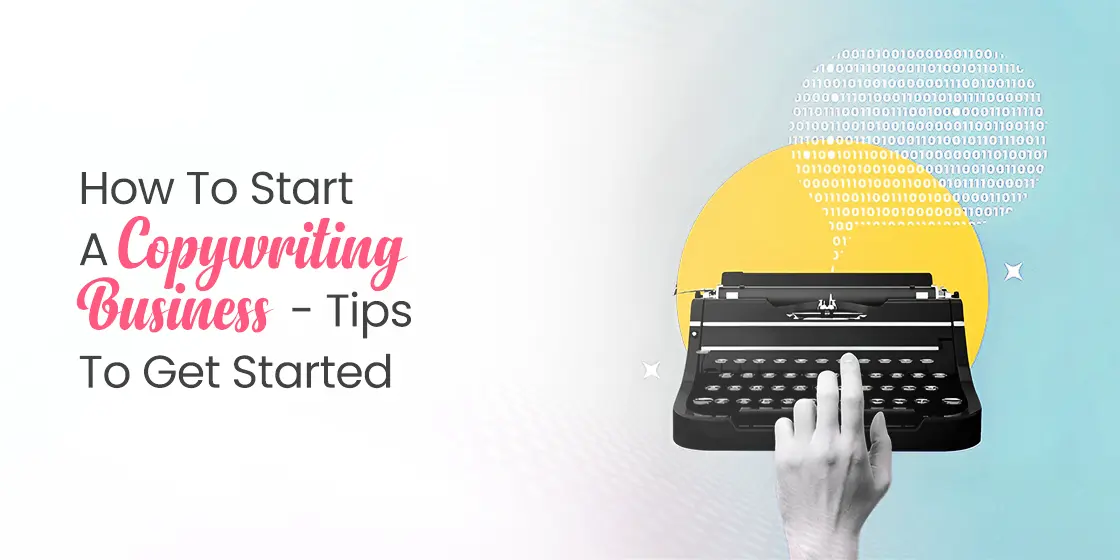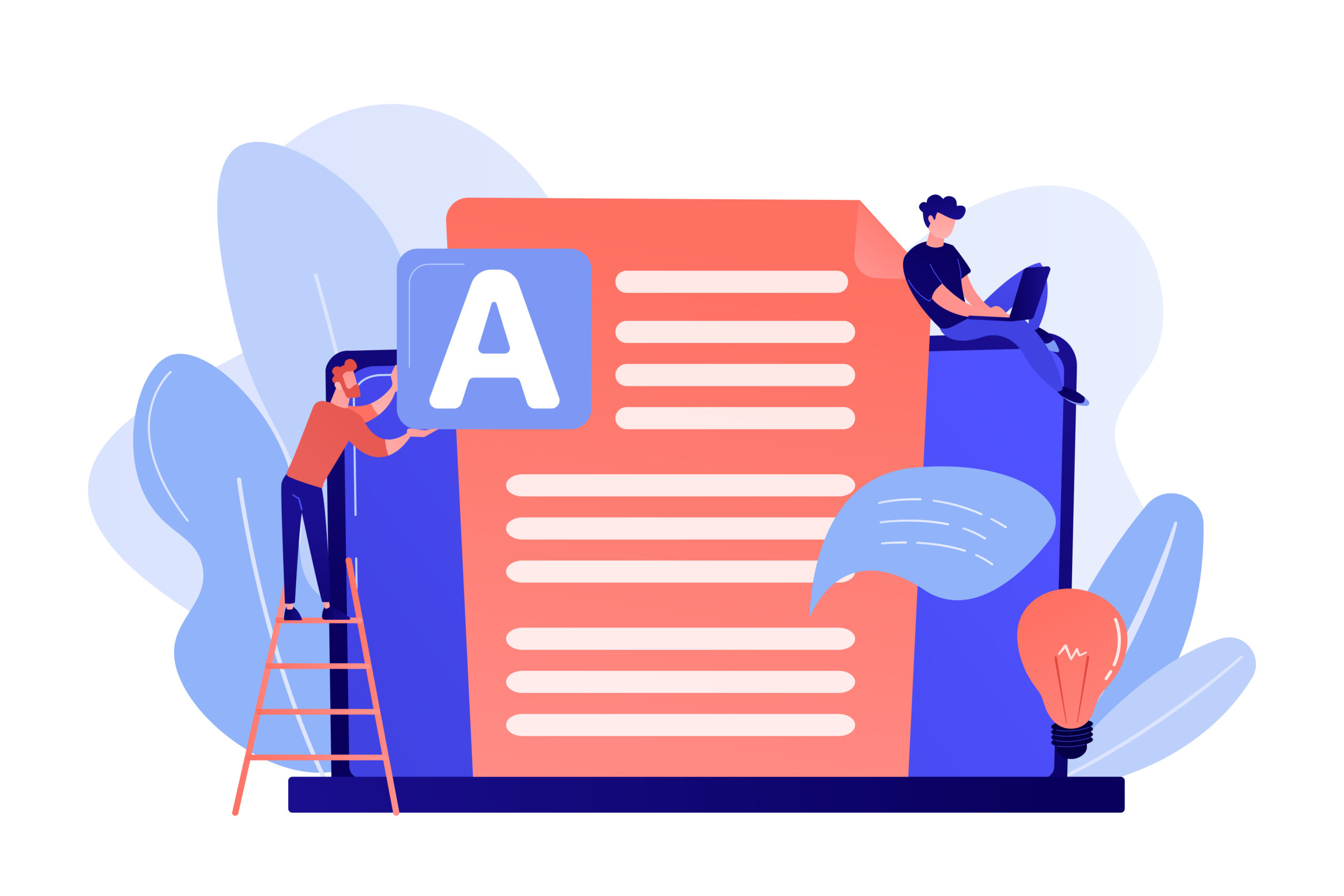Table of Content
Learn How to Write Landing Page Copies Like a Professional
Businesses create websites not just to merely advertise products, but to sell them to the customers. This is the core objective of every website, no matter how small or big it is. People also engage with those websites or applications that are simple and easy to understand. A lot of people think that by just putting interactive visuals on the front page will make the website attractive. Well, that is not entirely true because an engaging landing page copywriting is also required to make the website attractive. It describes your core selling message, one that could covert people instantly.
Writing a catchy copy often becomes a difficult for the project stakeholders. This mostly happens when they don’t have any idea about copywriting. In such cases, it is best recommended to take web copywriting services from professional agencies that are reputed in the market. They help businesses to craft compelling copies and get engagement on the website effectively. However, if you are not fond of hiring any external party, you can always write a catchy copy by yourself, though that will require a bit of learning first.
In this blog, we will discuss about landing page copywriting in detail. We will let you know how to write a creative copy that can convert customers quickly. This is basically the major goal of all websites, and copywriters are often responsible to deliver these results. Let’s start from the basics understanding what is a landing page and why it holds so much importance for conversion.
What is a Landing Page?

A landing page is a standalone web page designed with a specific objective in mind, often used in marketing campaigns or advertisements. Unlike a homepage, which serves as a general gateway to a website, a landing page focuses on a single call to action (CTA) such as signing up for a newsletter, making a purchase, or downloading a resource. It typically aligns closely with the content or offer presented in an ad, email, or other promotional channels, ensuring that the visitor’s experience is seamless and relevant to what they clicked on to arrive there.
The importance of a landing page lies in its ability to drive conversions by concentrating the user’s attention on a specific goal. When a visitor lands on a well-designed landing page, the layout, copy, and design elements are all tailored to guide the visitor toward taking the desired action. This focused approach minimizes distractions, and uses persuasive elements like testimonials, trust signals, and compelling visuals to encourage decision-making. Without such a page, users may bounce away, losing interest or getting distracted by unrelated content.
Optimizing landing pages for conversions is critical because they are often the final step in a customer’s journey. A high-converting landing page can significantly boost the effectiveness of a marketing campaign, providing measurable results that justify the advertising spend. Factors such as loading speed, user-friendly design, compelling copy, and a simple, clear CTA all contribute to a page’s success. By aligning the landing page’s messaging, marketers can increase engagement, and ultimately drive more conversions towards the business.
What is Landing Page Copywriting?

Landing page copywriting is the art and science of crafting persuasive, concise, and engaging text specifically for landing pages. The goal of landing page copy is to communicate the value of a product in a way that resonates with the visitor’s needs and motivations, encouraging them to take the desired action. The copy typically includes elements like headlines, subheadings, body text, and calls to action (CTAs), each strategically designed to guide the visitor through the page in a seamless flow that builds trust and nudges them toward conversion.
Just like other types of copywriting, effective landing page copies hinges on understanding the target audience and their pain points. The copy should speak directly to the visitor’s interests, desires, and challenges, positioning the offer as the solution. This requires the writer to create a compelling value proposition—clear, concise messaging that highlights the unique benefits of the offer and why it’s worth the visitor’s time or money. A well-crafted headline is critical because it captures attention immediately, while the body text provides the supporting details and persuasive elements.
In addition to persuasive messaging, good landing page copywriting is also focused on clarity and simplicity. The content should be easy to scan, with attention-grabbing headlines, short paragraphs, bullet points, and clear CTAs. A/B testing and ongoing optimization of the copy are also key components of successful landing page copywriting, allowing marketers to refine their messaging based on user behavior and conversion data. Ultimately, the goal of landing page copy is to reduce friction, build trust, and persuade visitors to take immediate action.
8 Tips to Master Landing Page Copywriting

Writing a landing page is not easy as many people generally think. It is a copy that should resonate with your audience, engaging them to buy the product or at least take a brief look at it. To do that, you need to pick a style and tone differently from the conventional writing. Here are some tips that will let you know how digital copywriting should be done for landing pages.
Research the Audience
Researching the audience is crucial when writing a landing page copy because it ensures that the message resonates with the specific needs. Understanding the audience allows the writer to tailor the language, tone, and content to align with the visitors’ expectations, making the landing page feel more relevant and personalized. When the copy speaks directly to the audience’s challenges or goals, it can create an emotional connection, which increases the likelihood of the desired action, whether it’s signing up for a newsletter, making a purchase, or downloading a resource.
In addition, audience research helps optimize the call-to-action (CTA) and other key elements of the landing page. By understanding what motivates the audience—whether it’s convenience, cost savings, or the promise of a better lifestyle—writers can craft compelling CTAs that speak directly to these drivers. The use of familiar terms, relatable examples, and value propositions that align with the audience’s desires not only increases engagement but also builds trust. Effective audience research ensures that the landing page does not just inform but also persuades and converts.
Captivate visitors and convert them into customers with compelling web copy!
Drive ConversionsBegin with a Catchy Headline
An impactful headline is crucial on a landing page because it serves as the first point of contact between your audience and your content. In a crowded digital landscape, users typically skim web pages, and if your headline doesn’t immediately grab their attention, they are likely to move on. A compelling headline should speak directly to the visitor’s needs or pain points, offering a clear benefit or solution. It needs to be concise, as it sets the tone for the rest of the page. A well-crafted headline can spark curiosity and prompt visitors to continue reading, making it a key factor in driving engagement.
Moreover, an effective headline builds trust and relevance. It aligns with the user’s intent and expectations, ensuring that visitors feel they have arrived at the right place. In combination with a strong value proposition, a headline can provide immediate clarity about what the product, service, or offer is and why it matters. This is essential for improving the user experience, as it minimizes confusion and guides them down the conversion funnel. Without a powerful headline, even the most well-written landing page copy can fall flat, failing to capture the audience’s attention.
Keep the Copy Simple
When it comes to webpages, users interact with content differently than they do with books. Unlike books, where readers engage in a linear, immersive experience, online visitors tend to skim through pages quickly, scanning for the most important information. This means that long blocks of text or overly detailed content can overwhelm or lose their attention. To keep users engaged, it’s essential to craft concise, impactful copy that highlights the key messages right from the start.
In addition to short and crisp UX copywriting, the layout of your landing page plays a crucial role in user experience. A well-organized, easy-to-scan design ensures that visitors can quickly identify the most relevant information, whether through bold headlines, bullet points, or strategically placed visuals. By structuring your content to be digestible at a glance, you increase the likelihood that users will absorb your key points and take action, rather than abandoning the page out of frustration or confusion.
Address Pain Points
Addressing pain points in your landing page copy is essential because it directly speaks to the needs and concerns of your target audience. When potential customers land on your page, they’re often looking for solutions to specific problems or challenges they face. If you can identify and clearly address these pain points early on, you immediately establish relevance and show that you understand their struggles. This connection builds trust, making it more likely that visitors will stay on your page and consider your product or service as a potential solution to their issues.
By emphasizing how your offering solves these pain points, you guide the customer through a persuasive journey that resonates emotionally and logically. When people see that you’ve designed a product, service, or solution specifically with their challenges in mind, they are more likely to engage with your content, make a purchase, or take other desired actions. Focusing on pain points also helps you differentiate your brand from competitors who might focus more on generic features rather than addressing the specific problems that matter most to your audience.
Put Focus on Benefits
Describing product benefits is crucial when writing landing page copy because it highlights how your offering can make a meaningful impact on the customer’s life. While features describe what the product does, benefits focus on the real-world value the customer will gain from using it. This shift from technical specifications to personal outcomes helps potential buyers envision themselves using the product. By clearly articulating these benefits, you not only address the pain point, but also show how your product directly aligns with the customer’s needs and desires.
In addition, focusing on benefits helps differentiate your product in a crowded marketplace. Even if multiple competitors offer similar features, your ability to effectively communicate the unique advantages your product provides can sway purchasing decisions. Benefits speak to the emotions, desires, and aspirations of your audience, making your offering more appealing and relevant. A well-crafted landing page that emphasizes these benefits fosters a stronger connection with potential customers, moving them closer to taking action.
Use Social Proof
Taking cue from social media copywriting, incorporating real-life results into your landing page copy is a powerful strategy to build trust. Social proof, such as customer reviews, testimonials, case studies, or user-generated content, showcases that others have successfully used and benefited from your product or service. This external validation helps establish credibility and reduces skepticism, which is a significant hurdle for many online buyers. When visitors see that real people have had positive experiences with your offering, it reassures them that they are making a sound decision by considering your brand.
Moreover, social proof effectively demonstrates the value and reliability of your product or service in a way that’s more relatable and authentic than traditional marketing claims. It humanizes your brand, making it feel more trustworthy and grounded in real-world experience. By highlighting user stories, or the number of satisfied customers, you tap into the psychological principle of social influence, which shows that people are more likely to trust something that others have endorsed. This can significantly lower the perceived risk of purchasing, particularly for new visitors.
Use Interactive CTAs
A clear and compelling Call-to-Action (CTA) on your landing page serves as a critical guidepost for users. Whether it’s to “Buy Now,” “Learn More,” or “Get Started,” the CTA directs visitors toward the next step in their journey, making it easier for them to take action. Without a strong, well-placed CTA, users may feel uncertain about how to proceed, potentially leading them to abandon the page without completing a desired action. By providing clear guidance and a sense of urgency, your CTA ensures visitors know exactly how to move forward and continue engaging with your brand.
Optimizing your CTA can significantly improve your conversion rates. Small adjustments, such as using action-oriented language, creating a sense of urgency, or offering incentives, can make a big difference in how effectively your CTA prompts action. Additionally, the placement, size, and design of your CTA button are crucial; it should be prominently displayed and easy to find, so visitors don’t miss it. By continually testing your CTAs, you increase the likelihood of turning casual browsers into paying customers, ultimately boosting the overall effectiveness of your landing page.
Run Continuous Testing
The landing page copywriting process extends far beyond the initial launch of the page. Once your landing page is live, it’s crucial to actively monitor user behavior to gain insights. By tracking key metrics such as bounce rates, click-through rates, and conversion rates, you can identify areas where your page might not be performing as expected. This data can reveal where users are losing interest, helping you pinpoint specific weaknesses in the messaging, layout, or user experience.
Armed with this information, you can make data-driven adjustments to improve your landing page’s effectiveness. Whether it’s tweaking your headline for more clarity, changing the placement of your call-to-action (CTA), or testing new design elements, ongoing optimization is essential for maximizing results. Landing page optimization is an iterative process, so continually analyzing user behavior allows you to refine and enhance your copy, ensuring that you’re always improving your conversion rates.
Frequently Asked Questions
| What is landing page copywriting? Landing page copywriting is the process of crafting persuasive, concise content that encourages visitors to take a specific action. It focuses on addressing the audience’s needs and guiding them through the decision-making process with clear messages. |
| Why landing pages are important for conversions? Landing pages are crucial for conversions because they provide a focused, goal-oriented experience that directs visitors toward a specific action. By eliminating distractions and delivering targeted messaging, landing pages increase the likelihood of turning visitors into customers. |
| What is the importance of using CTAs in landing pages? CTAs are essential in landing pages because they provide clear direction, guiding visitors on the next step to take in the conversion process. A well-crafted CTA increases user engagement and significantly boosts the chances of turning visitors into customers. |
Final Words
That takes us to the end of this blog in which we have discussed landing page copywriting in detail. It is certainly an important part of web pages, because content is always responsible to deliver the targeted selling message to the clients. So, writing a compelling copy that can convert customers quickly is hugely important for businesses. This blog has discussed plenty of tips related to landing page copywriting, so that you can understand how a professional webpage with selling attributes should be written.

Unleash your brand story`s potential with eContentSol – your creative writing companion. We craft narratives that captivate. Ready to elevate your content game? Dive into creativity with us and let`s bring your ideas to life.


